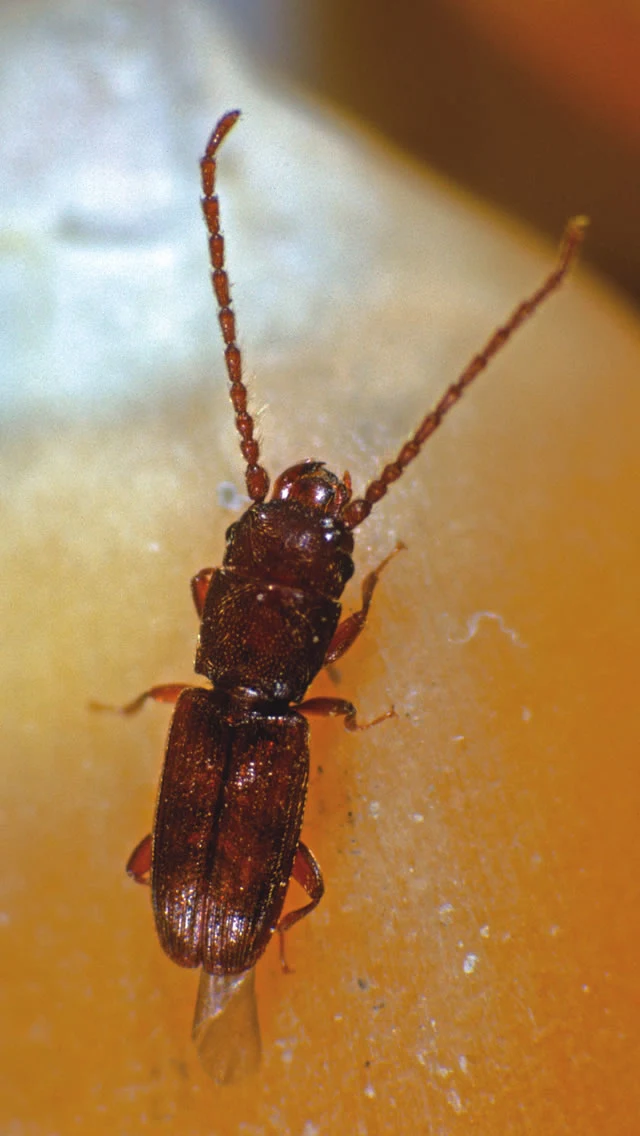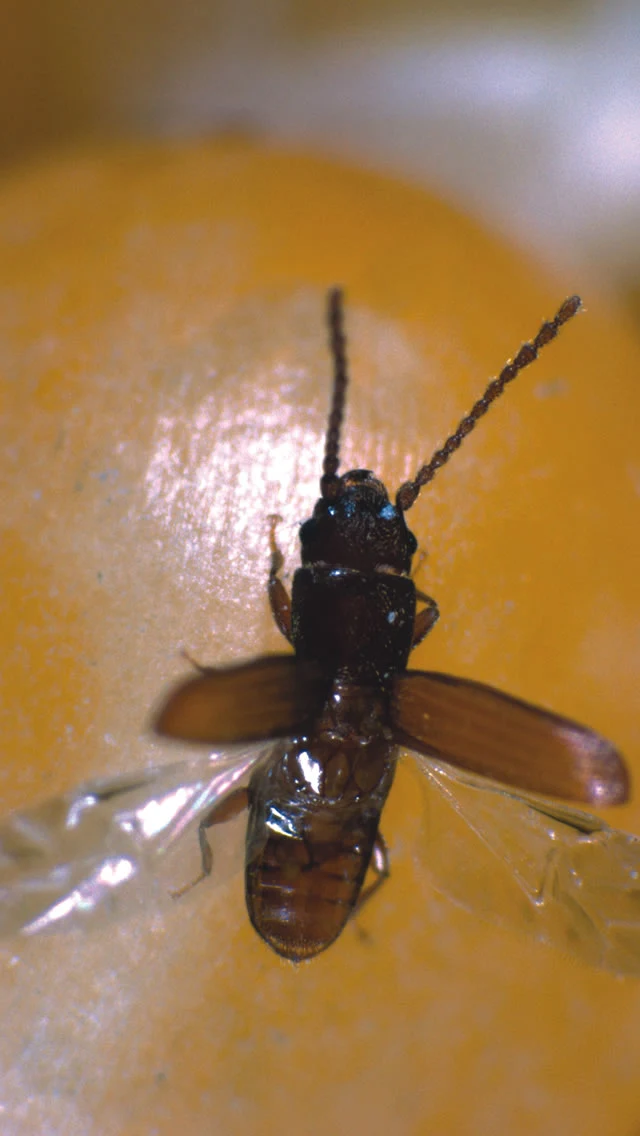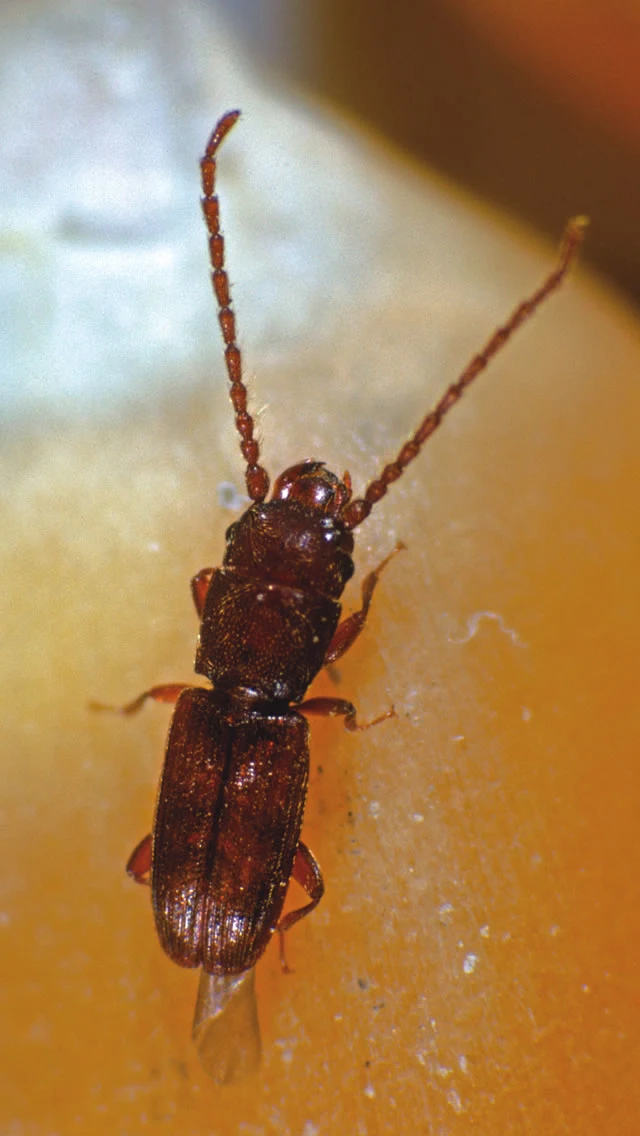
Rust-red grain beetle
Cryptolestes ferrugineus
Identification
The adults are a shiny rust-red/mahogany colour with an oblong flattened appearance and are 1.5-2.5 mm in length. The long ‘beaded’ antennae are straight, un-clubbed and can be almost the same length as the body. Coming from tropical environments they are more active at higher temperatures and in hot summers they are able to fly to new locations. The larvae are 4 mm in length with 2 brown horn shaped projections at the rear end.
Symptoms
Any slightly damaged grains allow access for both the adults and the larvae to feed on the grain germ (embryo part of the seed) and on occasion they can also feed on the endosperm.
Life-cycle
Single eggs are laid in the crevices of individual grains and the emerging larvae burrow into the grain to start feeding. After passing through 4 moulting stages they pupate in the feeding area attached to grain or other suitable surfaces. The emerging adults continue the cycle which in ideal conditions (temperatures in excess of 30 °C) can be completed in as little as 20 days.
Importance
Distributed globally the rust-red grain beetle is an important pest of grain in the UK as it is able to overwinter in unheated buildings and stores and will also infest and damage stocks of nuts, oilseeds and dried fruit.
It is one of the three most common primary insect pests of stored grain in the UK along with the grain weevil and saw-toothed grain beetle. Different combinations of these and other insect species are often found infesting grain in the same store.
Management of storage pests
Use trapping methods to identify and measure insect infestations
Clean stores thoroughly before harvest and seal all building cracks and crevices
Store grain at <15 % MC and < 15 °C
Where appropriate apply insecticides to the fabric of stores or apply grain protectants

Rust-red grain beetle adult about to take-off ©Nigel Cattlin/FLPA.

Rust-red grain beetle adult about to take-off


